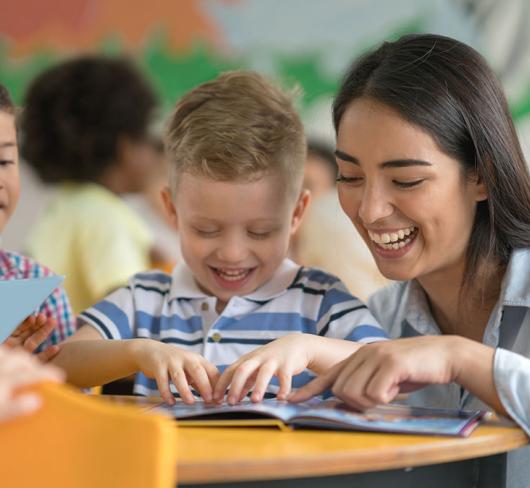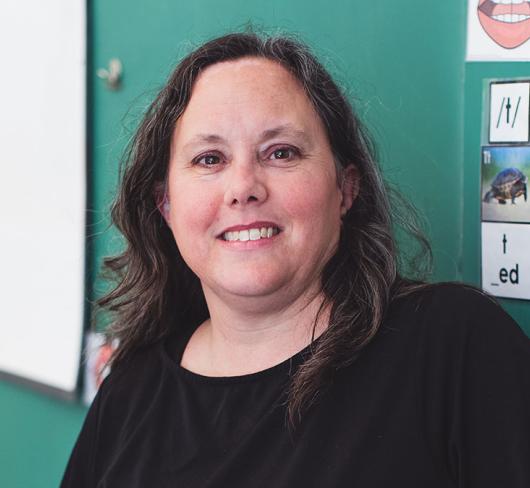Drama and Literacy in the Primary Grades (Part of Making Connections: Using the Arts to Teach Literacy)
As a primary teacher and former literacy teacher on special assignment, I know the importance of making connections in reading – text to text, text to self and text to world. We need to find ways to engage learners, using multiple intelligences. It is essential that we provide opportunities for children to talk about what they are learning. Drama is one such vehicle.
Drama is … Expression
Drama allows students to express and understand themselves and others. It enables students to learn about the lives of people in different times, places, and cultures. Practical artistic skills are developed along with critical thinking skills. Communication skills such as listening, speaking, following directions, retelling, recounting, presenting, and vocabulary building are used. Students experiment with and develop voice flexibility, articulation, projection, and expression.
Drama is … Curriculum
Curriculum outcomes in the Language Document (Oral & Visual Communication) outline many objectives that can readily be interwoven with other curriculum disciplines. Students listen and speak in order to understand and explore ideas and concepts. They can identify and solve problems, organize their experience and knowledge, and express and clarify their thoughts and feelings. Listening and speaking skills are essential for cooperative learning activities and for social interaction. A safe environment wherein students feel free to express themselves in new ways needs to be secured.
Drama is … Active
Role playing is a key component of the drama and dance curriculum. Curriculum outcomes in the Arts Document (Drama and Dance, pages 46-52) outline many objectives that enable students to “live through” the experiences of others. They learn to understand a variety of points of view and motives, and to empathize with others. Students in Kindergarten and Grades 1 and 2 will begin to use stories, plays, and poems to explore real and imaginary characters. Students will also experiment and explore the use of ges- tures and facial expressions to communicate in nonverbal ways. In Grade 2, students begin to write in-role to develop their ability to under- stand others. In Grade 3, they begin to use tech- nology as another means of expressing mood. Chants and rhymes can be created and per- formed with actions, music, and sound effects.
Drama is … Inclusive
Drama allows students to use the seven intelligences: verbal linguistic (writing), bodily kinaesthetic (acting), visual spatial (scenery), musical rhythmical (raps), logical mathematical (cause & effect), interpersonal (facilitate), and intrapersonal (imagine oneself in a situation). Drama accommodates the various learning styles of students and allows them to develop, refine, and weave new ways of learning into their everyday lives.
Drama is … Social
Drama activities involve children as active learners in improving, inventing, and discovering ways to solve problems. Drama develops language: talking, listening, reading, and writing. Drama is learning through play. Students can explore drama by practising moving to sound to help them build a repertoire of body movements. Self-confidence and self-awareness are developed in a group setting. The drama activities allow children to create for themselves. They can project themselves into another’s experience, point of view, and style of feeling or thinking.
Drama is … Thinking
Drama also allows students to use Bloom’s Taxonomy of thinking skills:
- Knowledge – recite, retell the story using puppets
- Comprehension – explain, provide examples using actions
- Application – using the information to pretend to be a character
- Analysis – contrast two characters using mime
- Synthesis – create, reinvent, look at in a new way
- Evaluation – judge, show what you would do if you were in the same situation.
Drama benefits oral language development, communicates meaning and understanding, and integrates listening, speaking, reading, writing, and thinking.
Drama is … Flexible
Drama can be done as a whole-group, small- group or individual activity. It can be done outdoors, in a gym or auditorium, at a classroom learning centre, or on the carpet in the classroom. It can become an important part of your daily physical activity.
Drama can be as simple as acting out words in a finger play (five little pumpkins) or as complicated as a play produced for a school audience using props, scenery, costumes, and lighting. Drama is instantly available. Most drama is process oriented. It can be spontaneous play. Students can use their imaginations or have access to a box of hats, masks, pieces of fabric, and props from the dollar store.
Drama can be integrated into phonological and word-study activities. Students can use their bodies to make the letters of the alphabet, they can act out a word (jump), and they can show movement (slow).
Drama can be movement to sound (rhythm), movement based on ideas (mime), speech (choral reading), speech combined with movement (dramatization), and interpretation of the printed word (play). Stories can be used as a road map for the students (acting/dramatization) or as a springboard for invention (improvisation).
Drama can be:
- Listening and responding orally to language patterns in stories and poems
- Echoing words and phrases, using a choral response, using different voices
- Adapting songs, finger plays, and rhymes
- Substituting different words in familiar songs and adding sound effects
- Cooperating and collaborating with others on an artistic project
- (dance) Expressing ideas and feelings using movement sequences
- Presenting reader’s theatre to the class
- Role playing in pairs or with groups
- Using classroom puppets to retell a story
- Performing in a group, using a character’s dialogue and actions
- Storytelling using different voices to a buddy in another class
- Acting out stories from their own and other cultures (folk tales, nursery rhymes)
- Making connections between personal experiences and those of storybook characters
- Moving to recorded music
- Demonstrating an understanding of different points of view
- Solving problems in various situations through role playing and movement in drama and dance
- Using words and voice to communicate thoughts and experiences
- A safe, positive, learning environment!
Bibliography
Martha Attema. “Literature & Drama.” FWTAO curriculum insert, FWTAO Newsletter, vol. 12, no. 1, Sept/Oct 1993.
Hoyt, Linda. “Many Ways of Knowing: Using Drama, Oral Interactions, and the Visual Arts to Enhance Reading Comprehension.” The Reading Teacher, vol. 45, no. 8, April 1992, pp.67 – 71.
Resources
Reader’s Theater websites for scripts: surfcitydelux.com/readerstheater/index.htmlteachingheart.net/readerstheater.htm

